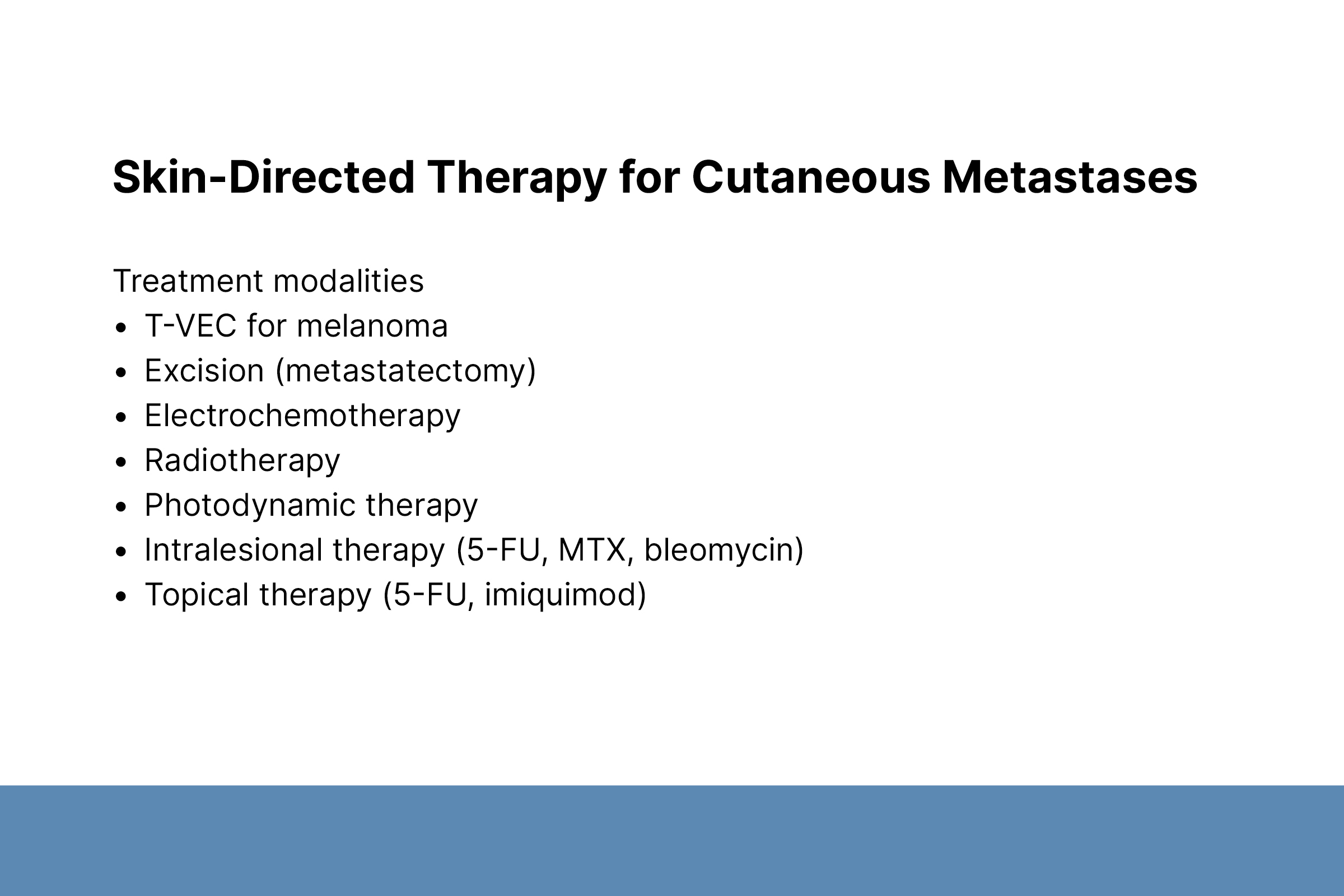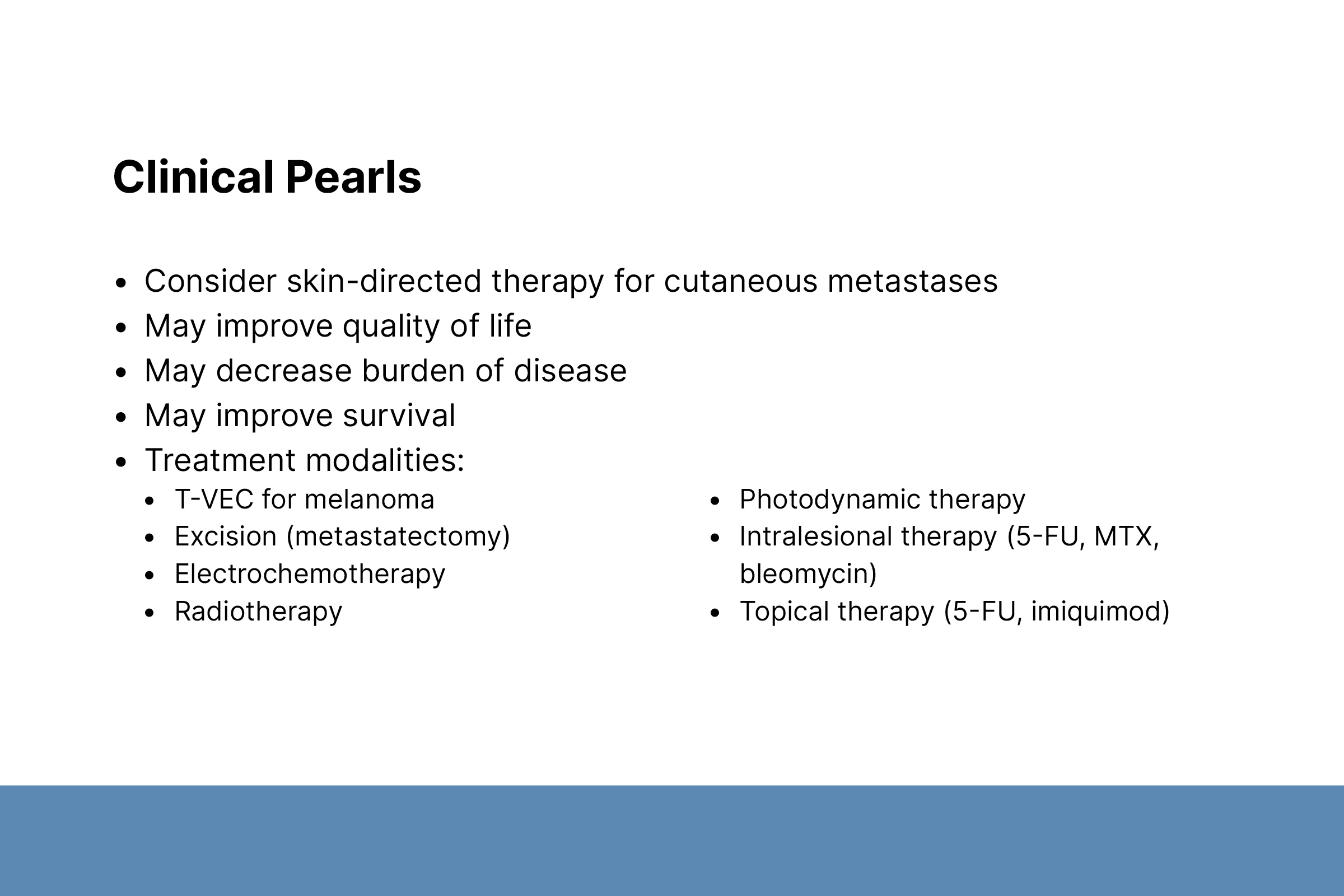Cutaneous Metastases in Cancer Patients
Jennifer Choi, MD
Professor of Dermatology, Chief, Divisions of Oncodermatology and Medical Dermatology, Northwestern University Feinberg School of Medicine, Robert H. Lurie Comprehensive Cancer Center
June 2024
Dr. Choi shared about the role of dermatologists in treating cutaneous metastases (CM) in cancer patients. Typically, dermatologists diagnose CM and refer patients to their oncologist for primary treatment. Dr. Choi argued that dermatologists can make a difference in clinical outcomes and patient quality of life by treating them with skin-directed therapies.
First, Dr. Choi described treatment options for in-transit cutaneous metastatic melanoma. In-transit melanoma refers to any skin or subcutaneous metastases >2 cm from the primary lesion but not beyond the regional nodal basin. It occurs in 2.3–13% of patients with invasive melanoma.
Dr. Choi presented the case of a 63-year-old male with a history of kidney transplant for polycystic kidney disease who developed stage III BRAF+ (v-raf murine sarcoma viral oncogene homolog B1) melanoma of the parietal scalp. The patient did not tolerate adjuvant BRAF inhibitors due to skin reactions. Monotherapy with mitogen-activated protein kinase (MAPK) inhibitors was contraindicated due to the patient’s heart failure with reduced ejection fraction. Immune checkpoint inhibitors were contraindicated due to the risk of kidney transplant rejection. The Tumor Board agreed to treat the patient with talimogene laherparepvec (T-VEC), an FDA-approved intralesional oncolytic virus for stage III/IV melanoma.
At week 5 of treatment, the patient presented with worsening disease. Before risking kidney complications from an immune checkpoint inhibitor, Dr. Choi recommended adjuvant topical imiquimod. The nodules began regressing by week 8 and achieved disease clearance by week 20. The patient remains disease free 5 years later. This was the first of five patients Dr. Choi treated with T-VEC and topical imiquimod; two others remain disease free after 3–5 years, and two developed systemic disease. These cases show that T-VEC treatment is within dermatologists’ scope of practice.
Second, Dr. Choi discussed dermatologist-directed treatment for CM in other cancer types. CM are the presenting sign of cancer in 16–26% of cases, most commonly in breast cancer and melanoma. One-third of breast cancer patients with CM may have no evidence of visceral metastases. CM can be mistaken for other conditions, including benign cysts and cellulitis.
A meta-analysis of skin-directed therapies showed a better response versus systemic therapy alone. Dermatologists can consider other treatment options, including topical therapy (such as imiquimod and 5-fluorouracil cream) and intralesional therapy (such as 5-fluorouracil injections) and surgical excision for single metastases.
To conclude, Dr. Choi encouraged dermatologists to consider skin-directed therapy for CM to improve quality of life, decrease disease burden, and improve survival. She believes that dermatologists can have a positive impact on CM diagnosis and treatment.





